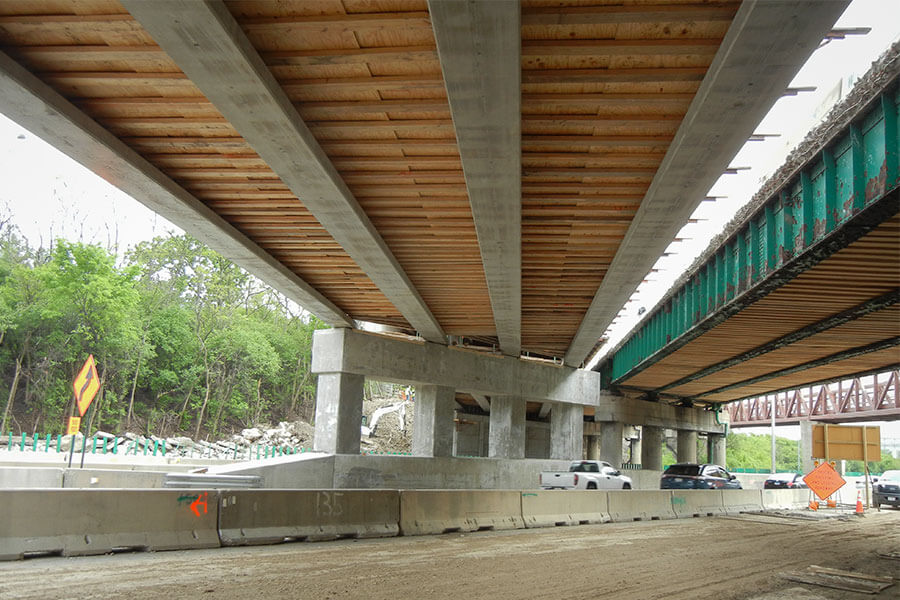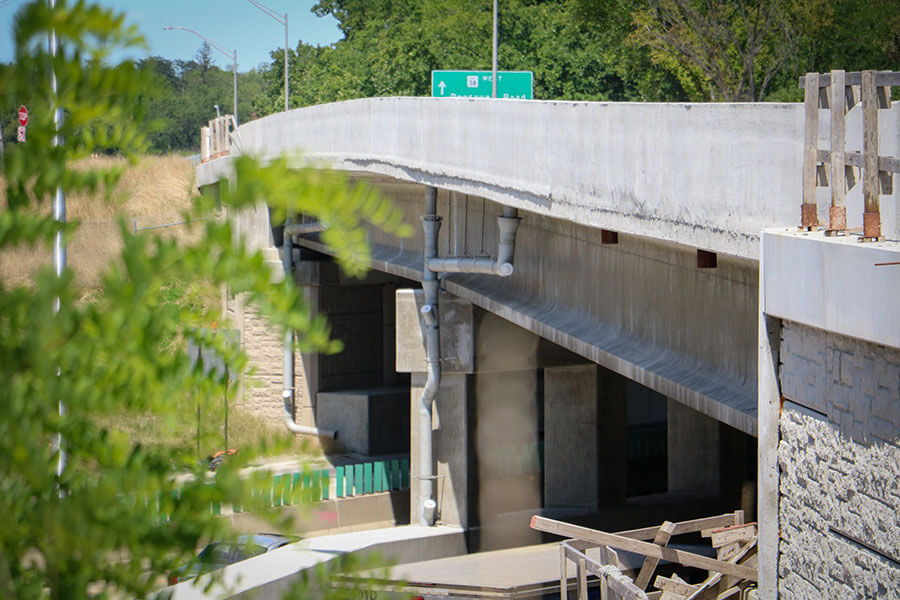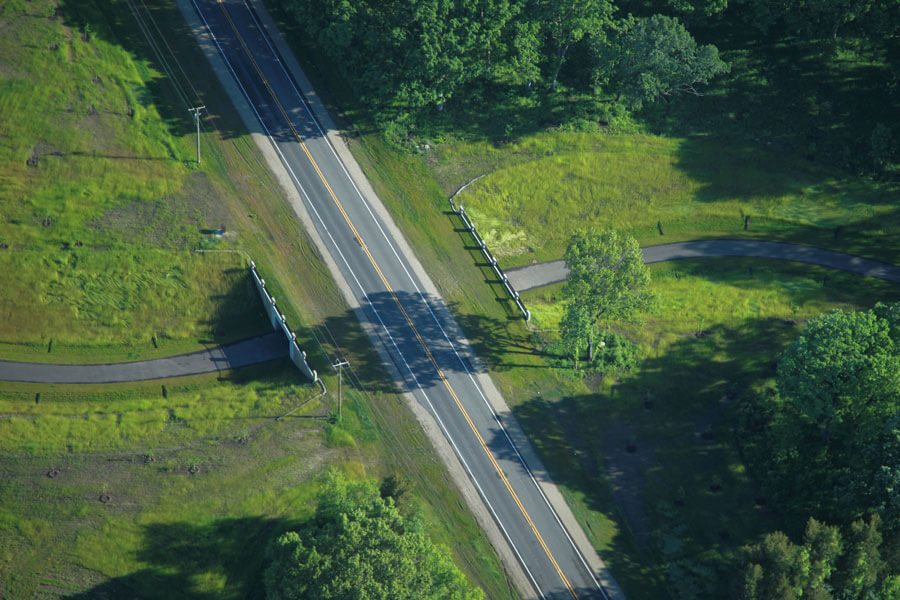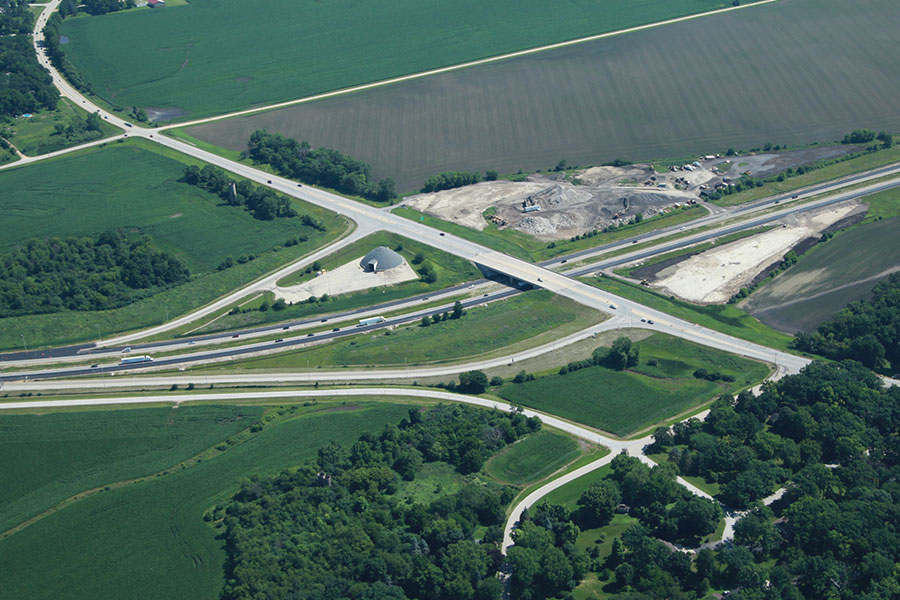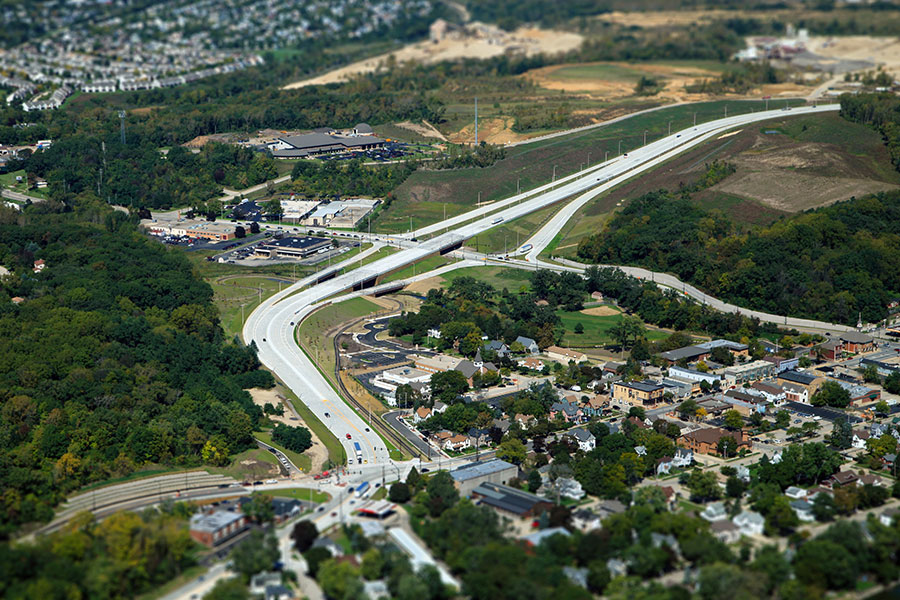Value Engineering
When Walsh Construction saw an opportunity to reduce the cost of a Tollway construction project through the value engineering of a bridge structure, they looked to Civiltech for the expertise to make that vision a reality. Civiltech provided the necessary structural design engineering services to evaluate Walsh’s desired changes and to provide the revised construction documents. But equally important, Civiltech brought expertise in navigating the Tollway’s value engineering process. The Tollway values the insight that contractor’s bring to a project and has an established process to allow contractors to present and justify changes that may be beneficial to the success of a project in the areas of construction cost, schedule, safety, and the quality of the finished product.
Click on image to view large.
Click on image to view large.
Creative Solutions to Reduce the Span
The as-bid York Road Bridge over I-88 in Oak Brook was designed as a 420-ft long 2-span steel plate girder bridge. The contractor saw an opportunity to reduce costs by shortening the bridge spans. To shorten the bridge spans, the abutments on both ends of the bridge were moved in and wrapped with Mechanically Stabilized Earth (MSE) walls. The MSE wall at the South Abutment was located and set at a depth to allow for the potential future addition of another eastbound lane on I-88. This reduced the overall length of the bridge by about 100-ft. With the reduced span lengths, the large steel girders were able to be replaced with concrete beams. With this change, the project saw reduced initial material costs as well as reduced long term maintenance cost from eliminating the need to repaint the beams in the future.
Designing from the Bottom up
Value engineering a bridge results in an accelerated and unique design schedule. The design adds a step to the project for which additional time is rarely granted. Typically a bridge design starts with the superstructure followed by the substructure and foundation, the reverse order of construction. In order to provide the contractor with what he needs when he needs it, the foundation and substructure plans were prepared first. The design of the foundation and substructure were based on conservative assumptions regarding the superstructure. For example, the bridge seats at the abutments and pier were conservatively sized in order to ensure they would accommodate the yet to be designed bearings. By designing the foundation and substructure first the contractor was able to start construction while we finished up the superstructure design and plan development.
Another unique challenge presented by value engineering is utility conflict mitigation. The accelerated schedule often does not allow time for utility relocation. In the case of the York Road Bridge, we were aware of a potential conflict between the proposed location of the South Abutment piles and an existing buried fiber optic line. The excavation for the South Abutment revealed the fiber optic line was in fact in conflict with the proposed piling. Knowing its exact location allowed us to adjust the layout of the piles to miss the line and proceed with construction.
Click on image to view large.
Design Engineering from a Different Perspective
Civiltech’s Director of Structural Design Services, Greg Hatlestad, P.E., S.E. stated that providing value engineering services to general contractors offers the opportunity to look at design engineering from a different perspective. When looking at the cost of a project, engineers usually use a cost per unit approach. Contractors focus more on an overall project cost sometimes resulting in cost savings approaches that may not be readily apparent from the design engineer’s perspective. For example, a design element with less scheduling impact may end up being more cost effective overall than something that can be built less expensively. As Greg states it, “Expense is dependent on a contractor’s abilities and schedules. Cost is not a static element in construction.” In regards to the York Road Bridge project, Greg says that he finds the value engineering experience and the associated challenges to be interesting and beneficial, calling it, “accelerated problem solving on a team basis.”
This Project Incorporates the Following:
- Value engineering
- Experience with Tollway processes
- Bridge design
- MSE walls
- Flexibility and responsiveness
Scope of Services
- Type, Size, and Location Plans
- Preparation of Contract Plans, Specifications, and Estimates
- Highway Bridges
- Retaining Walls
- Barrier Warrant Analysis
Funding:
- Tollway
Similar Projects


